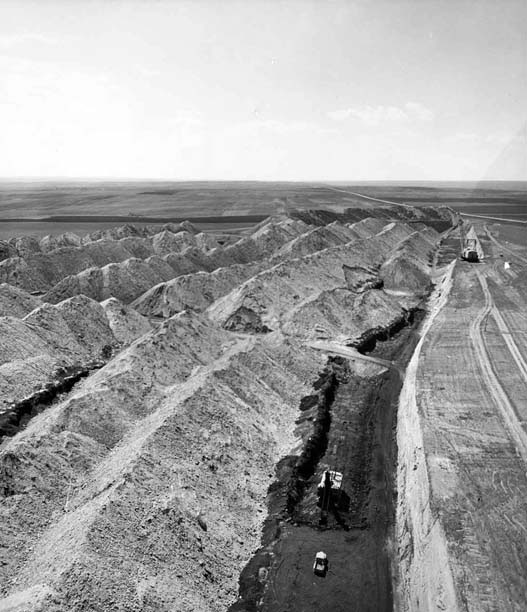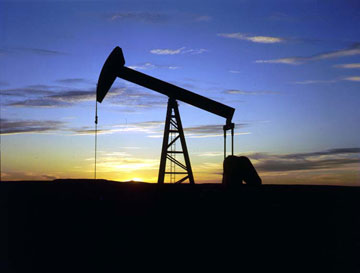We’ve launched a new web portal! Visit findhistory.nd.gov to search our collections.
Due to a road closure, the Killdeer Mountain Battlefield State Historic Site is temporarily closed.

Governmental efforts to encourage economic diversification have taken several forms. In the 1960s, the administration of Governor William Guy actively promoted massive use of the vast lignite coal reserves. As the demand for electricity expanded, coal-fired generating plants became economically feasible, leading to major development of power plants and open-pit mining. A national concern with energy self-sufficiency in the 1970s resulted in huge investments by generating corporations and cooperatives in western North Dakota. By 1981, a dozen generating facilities and huge strip mines were in operation; large power lines carried the electricity to consumers both inside and outside North Dakota. The most spectacular result was construction of the nation's first coal-to-synthetic natural gas conversion facility near Beulah, which entered production in 1983.
This kind of economic development deeply disturbed many North Dakotans. Fearing that the "one-time harvest" of coal might forever destroy the land's suitability for agriculture, agricultural and environmental interests united to demand strong reclamation laws. In 1973, 1975, and 1977, the legislature responded with a set of regulations that addressed concerns about returning mined land to its original contours, replacing topsoil, and mitigating impacts on cultural resources. These laws have come under steady attack from energy interests, and some of the more stringent regulations have been modified during the 1980s.

Oil exploration and development also became part of the debate. High international prices for crude oil stimulated a "boom" in exploration and development in western North Dakota after 1978. An influx of workers and capital caused population explosions in western cities, such as Williston, Dickinson, and Watford City, and some municipalities went deeply into debt to provide local services to the new residents. However, world-wide oil prices declined in 1981, many oil workers moved on, and some localities found themselves without the means to pay off large debts incurred for municipal improvements.
Address:
612 East Boulevard Ave.
Bismarck, North Dakota 58505
Get Directions
Hours:
State Museum and Store: 8 a.m. - 5 p.m. M-F; Sat. & Sun. 10 a.m. - 5 p.m.
We are closed New Year's Day, Easter, Thanksgiving Day, and Christmas Day. We are closed at noon Christmas Eve if it falls on Mon.-Thurs. and are closed all day if it falls on Fri.-Sun.
State Archives: 8 a.m. - 4:30 p.m. M-F, except state holidays; 2nd Sat. of each month, 10 a.m. - 4:30 p.m. Appointments are recommended. To schedule an appointment, please contact us at 701.328.2091 or archives@nd.gov.
State Historical Society offices: 8 a.m. - 5 p.m. M-F, except state holidays.
Contact Us:
phone: 701.328.2666
email: history@nd.gov
Social Media:
See all social media accounts